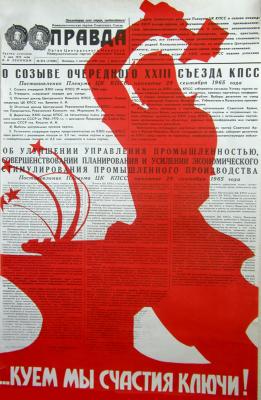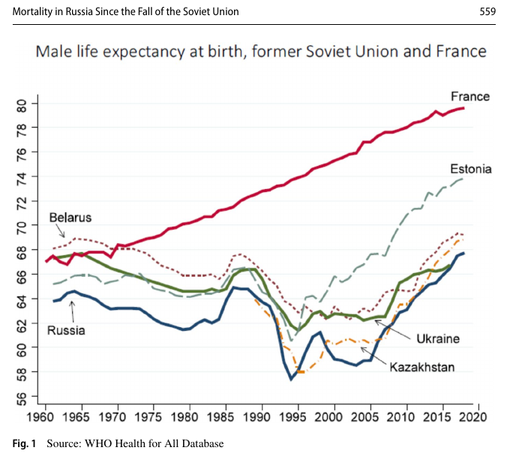I first saw this chart a couple years ago and it never stopped haunting me since. Imagine how it continues for the next 30 years.
https://pmc.ncbi.nlm.nih.gov/articles/PMC8553909/
@nemobis the (indeed striking) post-Soviet part not news to me (hopefully next 30y continues catchup to ~France) and heard of the Gorbachev anti-alchohol campaign but did not know it produced an immediate bump. Totally new to me is the slow decline from the early 1960s til that campaign. Wonder what caused that? https://www.jstor.org/stable/2955420 (paywalled for me unless accessed through https://scholar.google.com/scholar?cluster=14164432045154804623&hl=en&as_sdt=0,5) very weakly seems to say lifestyle and bad fit of Soviet healthcare for lifestyle diseases?
@mlinksva I don't know, but I suspect it's no coincidence that this started around the same time as the 1965 economic reforms.
https://en.wikipedia.org/wiki/1965_Soviet_economic_reform
Francis Spufford's "Red Plenty" (strongly recommended reading!) has some stories from that time. In hindsight, some may have been very important. For example changes to the pricing of meat, meant to help increase production. The Novocherkassk massacre was in 1962. Spufford's source is Michael Ellman's "Planning Problems in the USSR".

@mlinksva Brainerd's previous paper "Reassessing the Standard of Living in the Soviet Union: An Analysis Using Archival and Anthropometric Data" (2003) attempts to find the culprit with oblast-by-oblast data comparisons. https://warwick.ac.uk/fac/soc/economics/staff/mharrison/archive/noticeboard/bergson/brainerd.pdf
@nemobis thanks! Anthropometric is quite a word. I skimmed plenty of reviews of Red Plenty when it came out but apparently never got around to reading, will fix that shortly.


